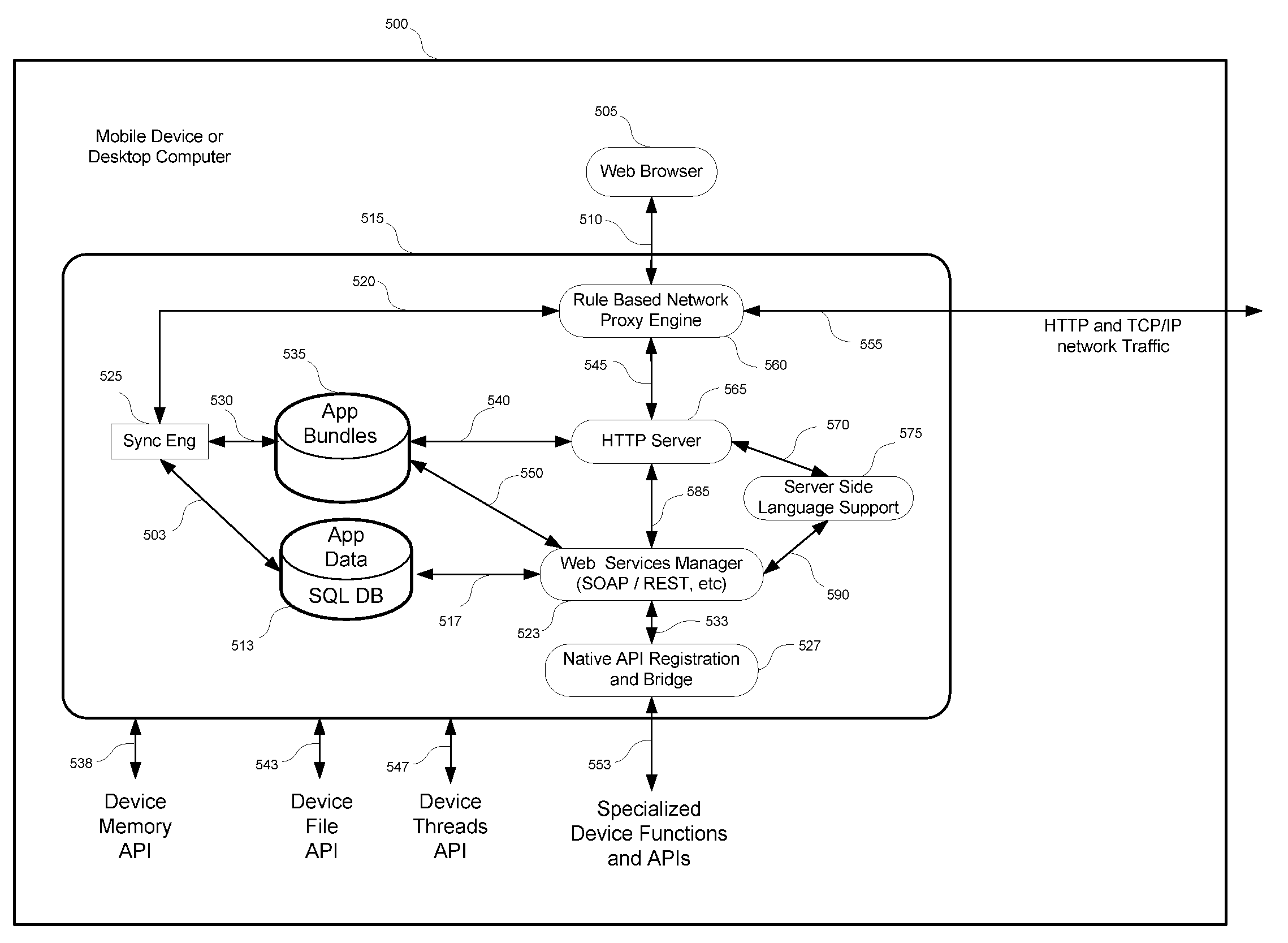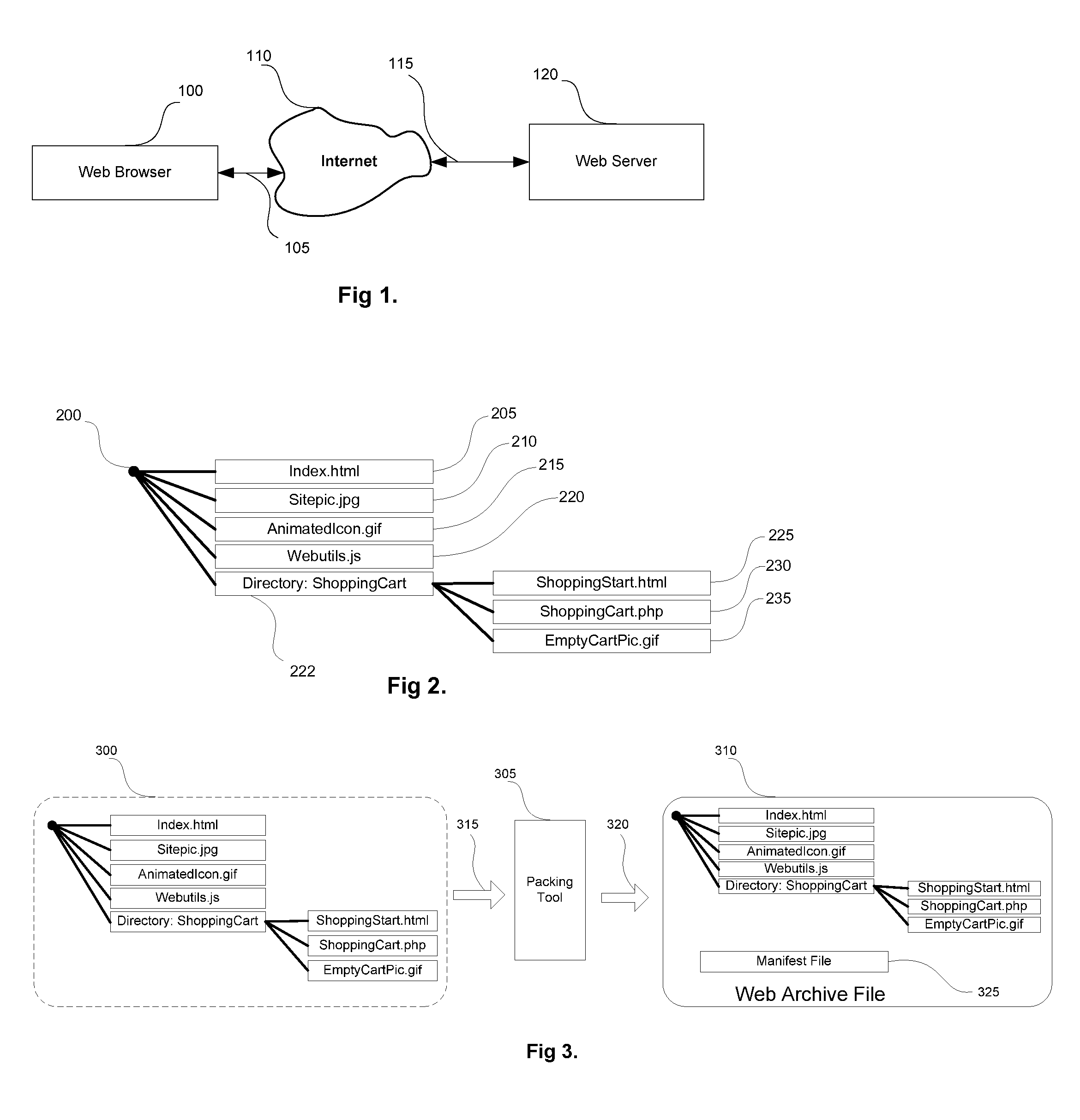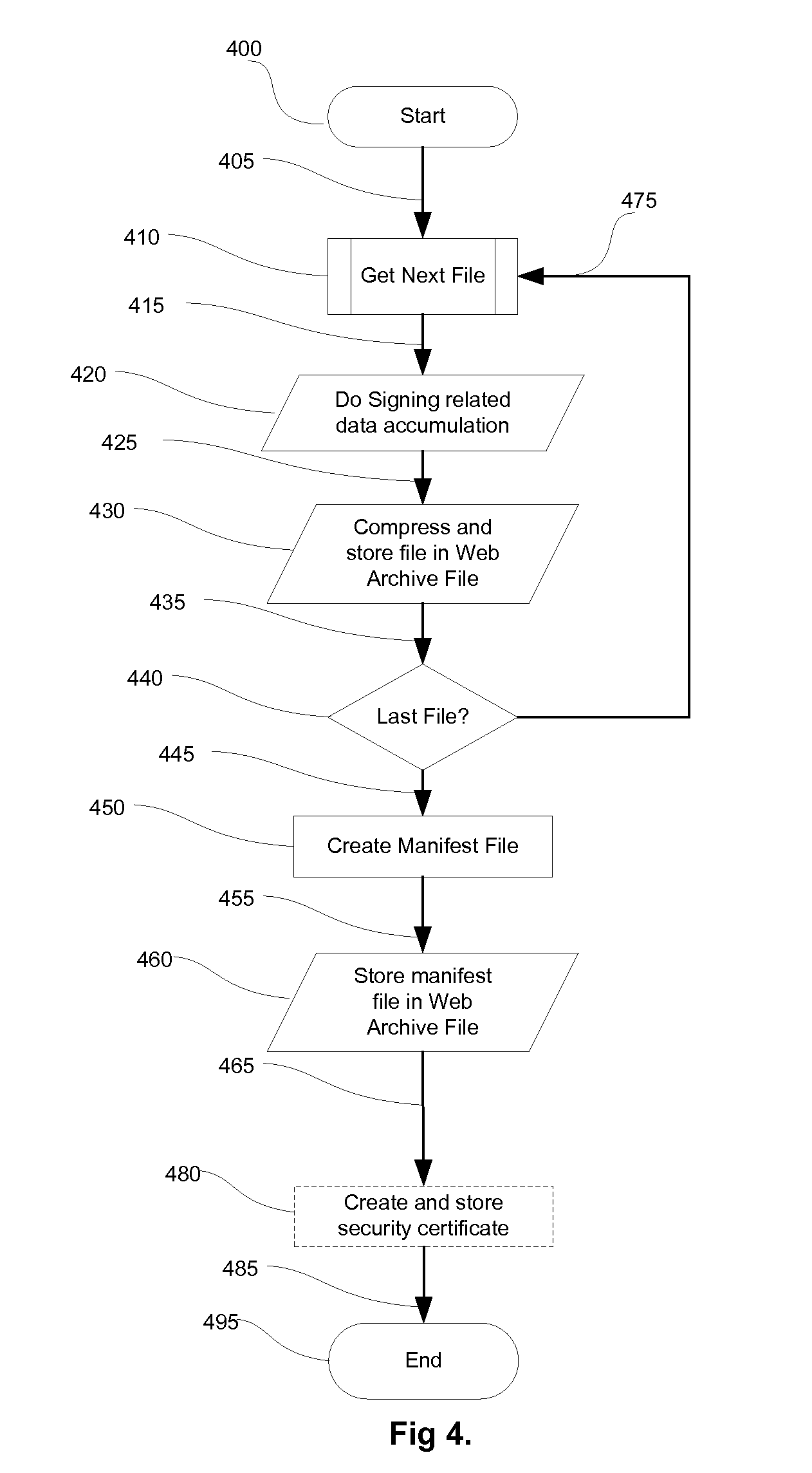System for Running Web Applications Offline and Providing Access to Native Services
a web application and system technology, applied in the field of system for running and authoring internet and web applications, can solve the problems of not providing an idea of page “flipping, dashboard environment does not provide automatic means for synchronizing and backing up user data, and the patent does not delineate how
- Summary
- Abstract
- Description
- Claims
- Application Information
AI Technical Summary
Benefits of technology
Problems solved by technology
Method used
Image
Examples
Embodiment Construction
[0027]The present invention builds upon the basic http client server model of HTTP connections to leverage a new user experience and web application programmer model by consolidating traditional client server mode programming into a new client based programming model with extra enhancements for offline application access.
[0028]FIG. 1. Represents a classic (such as Apache) http client and server connected via the Internet. A web browser (100) is connected via path 105 to the Internet (block 110) via path 115 to a web server (120. Here the paths 105 and 115 represent HTTP protocol paths over layered on top of the TCP / IP protocol as is known in the art.
[0029]FIG. 2. Depicts the layout of assets of typical web based applications as run on a server farm at a large company website. When creating a website various files are used to represent the content which would then be served to the internet as is depicted by block 120 in FIG. 1. In FIG. 2 we see the application assets used by the web ...
PUM
 Login to View More
Login to View More Abstract
Description
Claims
Application Information
 Login to View More
Login to View More - R&D
- Intellectual Property
- Life Sciences
- Materials
- Tech Scout
- Unparalleled Data Quality
- Higher Quality Content
- 60% Fewer Hallucinations
Browse by: Latest US Patents, China's latest patents, Technical Efficacy Thesaurus, Application Domain, Technology Topic, Popular Technical Reports.
© 2025 PatSnap. All rights reserved.Legal|Privacy policy|Modern Slavery Act Transparency Statement|Sitemap|About US| Contact US: help@patsnap.com



